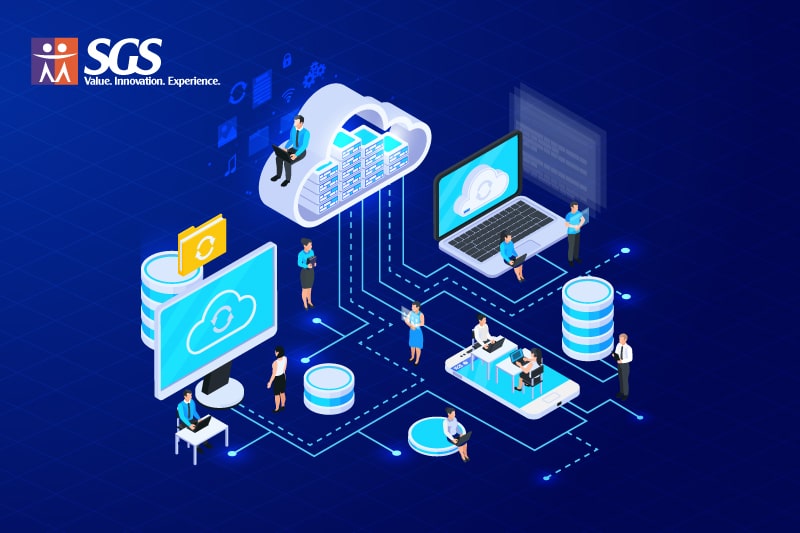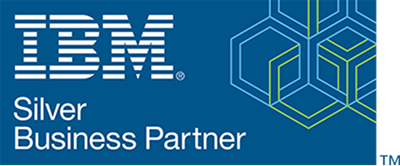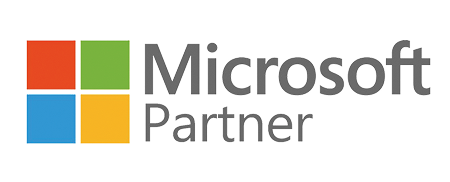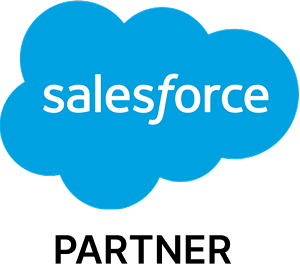Legacy application modernization is pivotal for organizations that want to remain competitive and agile in today's fast-moving technology turf. According to Gartner, by 2026, 75% of organizations will adopt a digital transformation model predicated on cloud as the fundamental underlying platform.
Today, many organizations are trying to develop a mixture of advancing customer expectations towards operational efficiency while reacting to unpredictable market fluctuations, realizing how critical it is to bring these aging legacy systems right up to date. While fundamental, such systems mostly limit innovation and agility because of outdated architectures, high maintenance costs, and poor integration capabilities.
In this blog, we explore the best practices and the proven strategies behind successful legacy application modernization by assessing the current state of legacy systems, the selection of the proper modernization path, execution of the projects, and ensuring their long-term sustainability. This deeper understanding can set organizations up to enter this transformative journey for improved performance, scalability, security, and compliance.
1. Introduction to Legacy Application Modernization
Understanding the Need for Legacy Application Modernization
Legacy systems, while once the backbone of many organizations, but now the challenge has changed, as these systems are no longer easy to maintain or to evolve. These systems are integrated so deeply into business, from financial transactional business to customer data handling. However, it begins to become obsolete when looked from a technology angle; these systems are not made today to meet requirements like distance working, cloud integration, or following even the latest cyber security protocols.
In reality, such systems only prevent enterprises from outward growth. They often prove antiquated and fail to adopt the flexible and agile approach of a modern enterprise, still requiring seamless legacy-to-technology integration. It is true that these systems still work; however, they make organizations less competitive and able to respond to change.
For progressive organizations, modernization involves more than just the application of technology; it is business imperative. It has made possible those capabilities, which otherwise remain latent, and thus improved the range of operational efficiency to customer satisfaction.
Modernization allows Companies To:
- Adopt new business models
- Respond quickly to market changes
- Meet regulatory requirements
- Better customer experiences
- Optimized internal workflows
Challenges Faced by Legacy Systems
While legacy systems have served organizations well in the past, they come with several challenges that can no longer be ignored:
- Inflexibility: By far, the greatest issue with legacy systems is their rigidity. They are often extremely difficult to cater to the ever-changing needs of the businesses which are forced to rely on them. New features or integration with a new tool? Implementation is usually a slow and painful affair for legacy systems, creating serious bottlenecks in your operations.
- High Operational Costs: It might sound cost-effective to continue with legacy systems, but maintaining them would in the long run turn out to be more expensive than modernizing. These legacy systems often require something of a specialist to maintain, and the expenses incurred in patching up obsolete software or hardware can quickly pile up into a hefty sum. In the end, the companies generally end up spending more money and effort trying to keep an old system on life support than it would cost to replace it with a totally new, much more capable system.
- Security Vulnerabilities: Security gets to be considered more and more serious, since old systems are going to be a liability. Many legacy applications use outdated securing protocols, which puts these applications at the risk of cyberattacks and potential breaches. This may result in the exposure of sensitive customer data, regulatory fines, and damage to the reputation of the organization.
- Lack of Integration: Legacy systems were not built to integrate with modern tools, cloud platforms, or APIs. This may create data silos and hamper efficiency with duplicate work across departments. Contrarily, modern systems are built to facilitate integration with other technologies for the data-sharing and collaboration processes.
- Knowledge Gaps: There are fewer experts trained in the old languages and technologies regarding legacy systems. As time pushes on, locating the skilled professionals that can support and troubleshoot these systems is increasingly difficult. This knowledge gap thereby increases the burden to fix when problems arise and postpones any modernization efforts.
2. Assessing Legacy Systems for Modernization
Before working on any modernization process, it is crucial to get a proper definition of what is to be modernized. A comprehensive assessment provides the clarity to make an informed choice.
Legacy Application Audit and Inventory
With a system in place for existing applications, one needs to begin a detailed survey into all legacy systems to assess their functionalities, architecture, pathological data flows, dependencies, and user roles. To know which systems are business-critical and which are under-used or redundant, try to gather scores on all applications in terms of utilization, cost, and complexity. This will assist in understanding what has priority for modernization.
Performance and Scalability Evaluation
Conduct performance measurements. Not only during peak hours do the systems slow down-but can they scale up to increased load of data or new users? Performance metrics and scalability issues have a way of popping some bottlenecks that help to clarify the choice of modernization.
Identifying Business Requirements and Stakeholder Input
Modernization should solve real business problems, which means IT, operations, finance, and customer service stakeholders will all come into play in gathering the requirements and pain points. After all, this way, one is sure to get a modernization process that delivers business value rather than that of a technical takeover.
3. Developing a Modernization Strategy
At the end of this whole assessment exercise, it's time to draw a solid modernization plan.
Setting Clear Goals and Objectives
Define what success looks like. Objectives may include:
- Reducing infrastructure overhead by X %,
- Increasing uptime of systems to 99.9%,
- Accelerating time to market for new features,
- Meeting certain compliance or security parameters.
Thus, having measurable goals helps track progress and puts teams on the same page.
Creating a Roadmap for Modernization
Break down the modernization journey into manageable phases. Focus on smart wins that quickly prove value. Some applications can be modernized in weeks; others may take into months or years. Do not try to modernize everything at once because every black hole leads to overruns and fatigue.
Resource Planning and Budgeting
Modernization means investment in tools, platforms, people and sometimes even temporary disruption to business operations. Make a budget with the following specific line items in mind:
- Software licenses/cloud costs
- External consultants/specialists
- Training and onboarding internal teams
- Temporary downtime or migration overhead
4. Choosing the Right Modernization Approach
One size does not fit all. The preferred strategy depends on the application's complexity, risks involved and expected results.
Rewriting vs. Re-platforming vs. Refactoring
- Rewriting: Development of the application from scratch using modern architectures and technologies. Best suited for systems whose code is old or poorly documented.
- Re-platforming: Move an application to a new platform: e.g., from on-premises to cloud with few code changes. Ideal when performance is the main problem.
- Refactoring: Cleaning the existing codebase; improving architecture; making it modular; without changing any functionality. Applicable to apps that work well but require scaling or integration.
- Each of them would have its pros and cons against cost, speed, and risk, but usually, a mix would best suit different systems.
Legacy System Integration Considerations
Modernized applications are hardly ever stand-alone applications. They must work with other systems, either modern or legacy. Hence, think API, middleware, or integration platforms to bridge gaps and to make data consistent across systems.
Selecting Technologies for Modernization
Technology should be chosen on the following criteria:
- Scalable
- Supported by the vendor
- Cloud native or cloud compatible
- Tied to your team's skill base
Among the popular consideration are microservices, containers (Docker), orchestration (Kubernetes), serverless functions (AWS Lambda, Azure Functions), and CI/CD pipelines.
With the modern scenarios and the best industry practices, many organizations prefer legacy applications migration into updated platforms, e.g., .NET, Java, modern architectures, and others. This would lead to better performance and a longer life for the systems. Outdated databases can be replaced or modernized as well with the same modern data platforms that will allow better analytics, scalability, and security.
5. Implementing Modernization Projects Successfully
Modernization is a complex project with many moving parts. Execution needs to be thoughtful and well managed.
Project Management Best Practices
Adopt agile or DevOps approaches, ensuring speedy iterations, regular feedback, and thus, continuous improvement. Establish milestones; track dependencies; maintain open communication through tools like JIRA, Confluence, or Trello.
Collaboration with Development Teams
Cross functional collaboration is key. Organize regular standups, retrospectives, and planning sessions for developers, business analysts, security teams, and QA engineers.
Change Management and User Training
Even the best modernized system can easily fail if its users do not accept it. There's early access; users may participate in beta testing and have well-designed training sessions. Invest in support resources such as how-to, FAQs, and internal documentation.
It is also sensible to recognize that modernization is by no means a one-off event: ongoing support, user training, structured onboarding, and more are the keys to sustaining the adoption and efficiency of the system in the long term. Organizations partnering with a modernization services provider, such as SGS Technologie, benefit from these last models of continuous support, addressing post-implementation issues and optimizing the solution over time.
6. Testing and Quality Assurance in Modernization
You can modernize confidently without testing lots of it.
Strategies for Testing Legacy Applications
Build a comprehensive testing strategy:
- Unit Testing: Check individual components
- Integration Testing: Ensure different systems talk to each other properly
- Regression Testing: Confirm that new changes haven 't broken existing functionality
- User Acceptance Testing (UAT): Let end users validate that the solution meets real world needs
Where possible, reuse existing test cases from legacy systems.
A key part of SGS Technologie modernization philosophy is ensuring seamless user experience during and after transformation. As such, modernization strategies should include thorough usability testing and interface upgrades. This helps improve end-user engagement and productivity by providing an intuitive and responsive user experience on modernized platforms.
Automation and Continuous Integration
Set up automated test pipelines using tools like Selenium, Postman, or GitHub Actions. CI/CD platforms (e.g., GitLab CI, Jenkins, Azure DevOps) help you deploy code confidently and often. Automation saves time, reduces human error, and improves test coverage.
Ensuring Data Integrity and Migration
Modernization often involves moving large volumes of data. Validate data before, during, and after migration. Run parallel systems temporarily to compare outputs. Always have a backup and rollback strategy in case something goes wrong.
7. Ensuring Security and Compliance in Modernized Applications
Security cannot be an afterthought it must be embedded into the modernization lifecycle.
Securing Modernized Systems Against Threats
Apply modern security standards:
- Encrypt data in transit and at rest
- Use role-based access controls
- Implement multi factor authentication (MFA)
- Run regular penetration tests and vulnerability scans
Shift security left in your DevOps pipeline integrate tools like Snyk or SonarQube to catch issues early in development.
Compliance with Industry Regulations
Ensure compliance with regulations specific to your industry and geography:
- GDPR for data privacy (EU)
- HIPAA for healthcare (US)
- PCI DSS for payment systems
- SOC 2 for SaaS platforms
Work with your legal and compliance teams from the start.
Data Privacy and Protection Measures
Data privacy isn't just about regulation it's about building trust. Implement data anonymization or masking where needed. Secure user consent, provide data access logs, and maintain an audit trail of sensitive data usage.
8. Sustaining Modernized Systems for Long Term Success
Modernization doesn't end at deployment. It 's an ongoing process.
Maintaining and Supporting Modernized Applications
Assign clear roles for maintenance. Set up helpdesks or ticketing systems for support. Keep documentation current and encourage knowledge sharing across teams.
Monitoring Performance and User Feedback
Use monitoring tools like New Relic, Datadog, or Azure Monitor to track uptime, response times, and error rates. Collect feedback through surveys, user interviews, or support tickets to identify areas for improvement.
Future Proofing Modernized Systems
Design with change in mind. Use modular architectures, scalable infrastructure, and flexible integrations. Keep exploring new tools, frameworks, and practices to stay ahead of the curve.
To stay competitive and agile, businesses must also remain open to future upgrades. SGS Technologie helps clients build systems with modular architectures and scalable foundations that support ongoing innovation, whether it's integrating with next-gen tools or adopting emerging technologies like AI, IoT, or advanced analytics.
Conclusion
Legacy application modernization is more than just a technical project it is a strategic initiative that enables growth, innovation, and resilience. With thoughtful assessment, a solid strategy, and a commitment to continuous improvement, businesses can transform outdated systems into powerful, modern platforms ready for the future.
Whether you're just beginning your modernization journey or refining your approach, these best practices will help you make decisions that drive long term value for your users, your teams, and your bottom line.
FAQ
Q: Why is legacy application modernization important for businesses?
A: Legacy application modernization is crucial for businesses to enhance operational efficiency, improve scalability, and stay competitive in a rapidly evolving market. By modernizing legacy systems, organizations can adapt to changing technology trends, meet customer demands, and drive innovation.
Q: How can organizations determine if their legacy applications need modernization?
A: Organizations can assess the need for modernization by evaluating factors such as technical debt, system obsolescence, impact on business operations, and alignment with current business objectives. Conducting a thorough analysis of these aspects can help determine the urgency and scope of modernization efforts.
Q: What are the common challenges associated with legacy application modernization?
A: Common challenges in legacy application modernization include data migration complexities, integration issues with new systems, managing legacy dependencies, ensuring data security during the transition, and overcoming resistance to change from stakeholders. Addressing these challenges with careful planning and execution is essential for a successful modernization process.
Q: How can organizations ensure the success of their modernization efforts in the long run?
A: Organizations can ensure the success of modernization efforts in the long run by prioritizing ongoing maintenance, continuous improvement, and regular updates to the modernized systems. Additionally, providing training and support to end users, fostering a culture of innovation, and staying abreast of emerging technologies can help organizations sustain the benefits of modernization over time.











